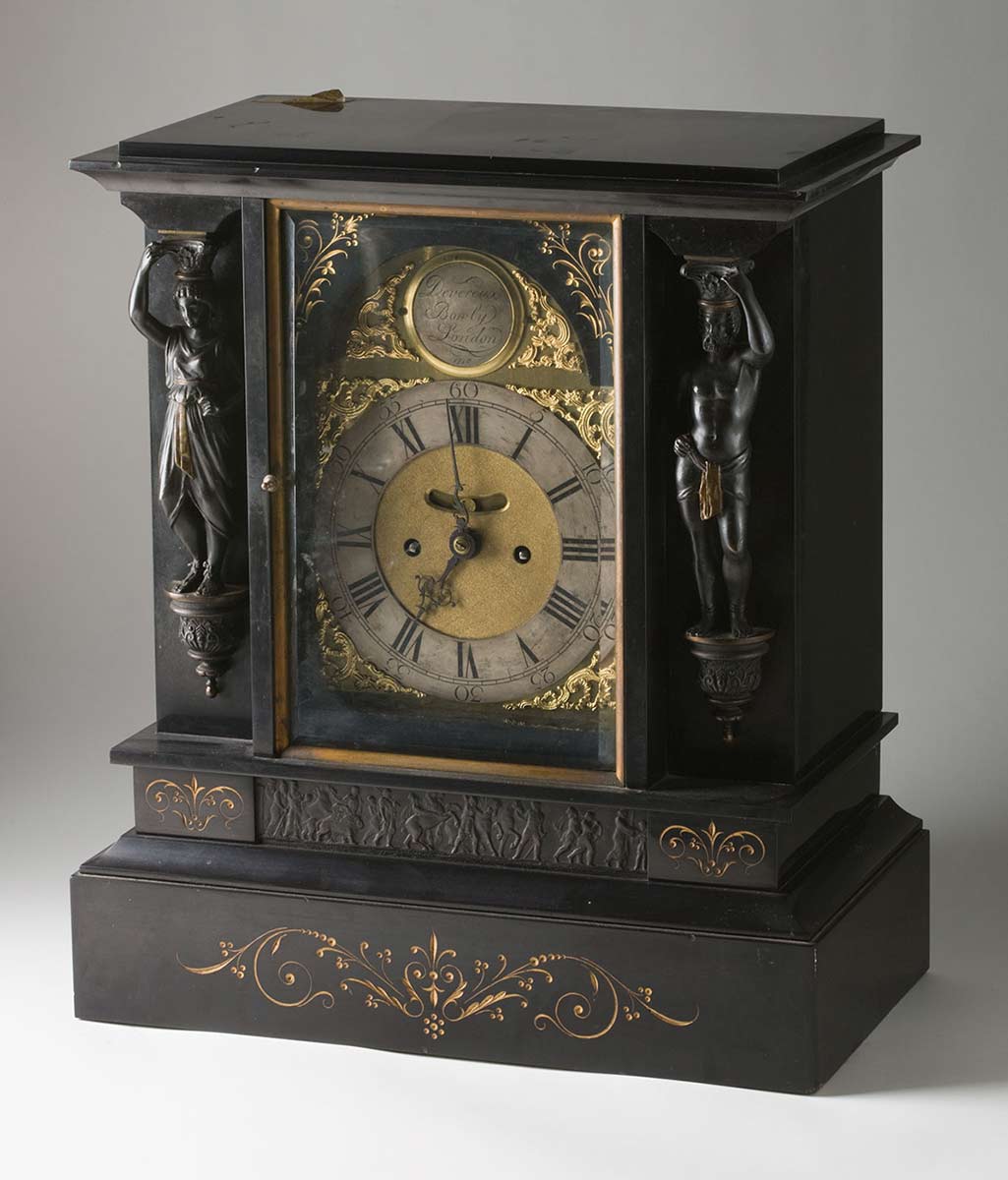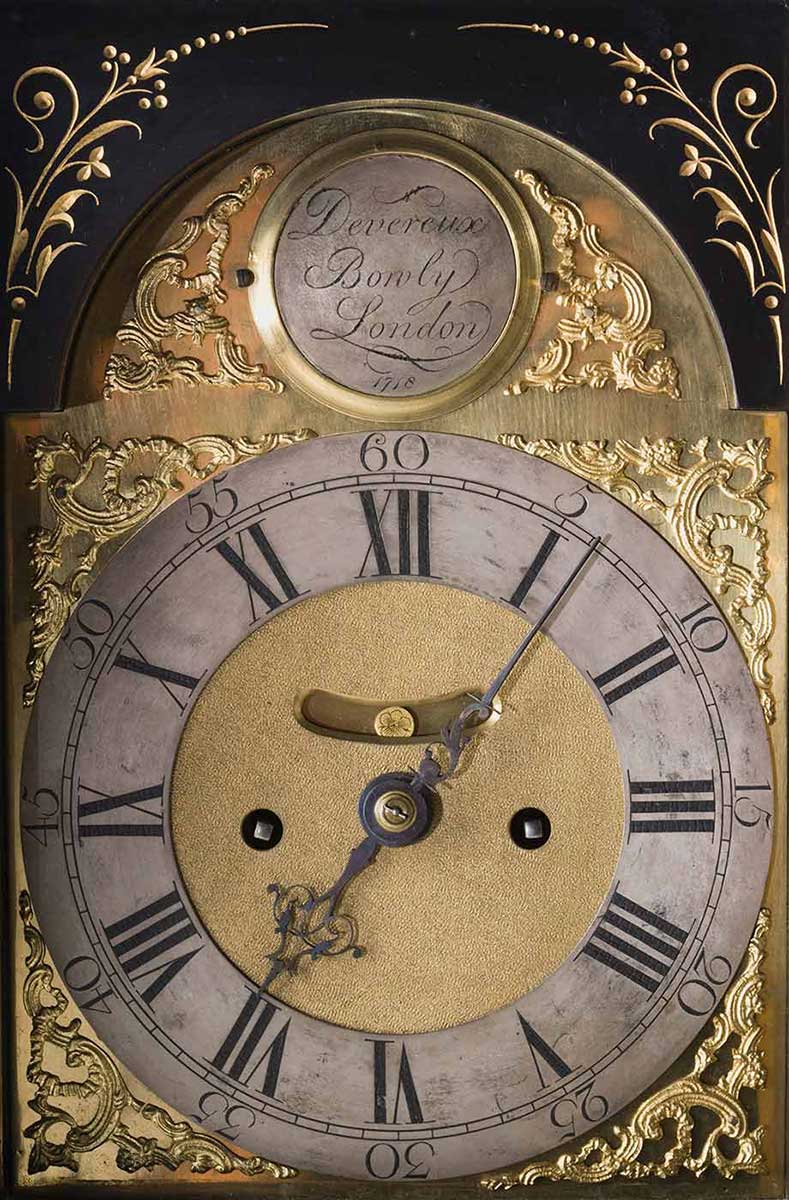
This pendulum mantel clock was brought to Australia by the Blaxland family in 1807. Pioneer and explorer Gregory Blaxland arrived in 1806, while his brother, John sold the family properties in England and followed a year later.
Made by London clockmaker Devereux Bowly in 1718, the clock weighs 45 kilograms and has gold floral scrolls and two decorative figures on either side. The base has a frieze of human figures, lions and horses, and gold floral scrolls.
Blue Mountains crossing
In 1813 Gregory Blaxland, William Charles Wentworth and William Lawson became the first European settlers to successfully navigate a path across the Blue Mountains.
Their feat opened the inland to pastoralism, and set in motion a pattern of land disputes that would result in the dispossession of Indigenous peoples across the continent.
Devereux Bowly
Devereux Bowly worked at 54 Lombard Street in London. He was apprenticed to clockmaker William Tomlinson and was a member of the Clockmakers’ Company (a guild) from 1718. He became a Master Clockmaker in 1753.
The clock is powered by a fusee system which was first adapted for powering of a horological timepiece in the early 1500s by Jacob Zech, a clock maker of Prague. Earlier drawings of this system by Leonardo Da Vinci (1452–1519) show the fusee in principle.
The fusee is a spirally grooved pulley varying in diameter designed to equalise the torque of the mainspring when it is fully wound and unwound. A fine chain, similar to the construction of a bicycle chain, transmits the power of the mainspring from the barrel to the fusee.

Blaxland family
John Blaxland was a Captain in the Duke of York’s Cavalry. He inherited the family estates and resigned his military commission in 1792 to manage the properties at Newington, Kent in England.
John and his brother Gregory became interested in New South Wales and decided to venture to the new colony, possibly on the recommendation of their friend Sir Joseph Banks. They were promised land and convicts to work for them by the Colonial Office.
Gregory was the first to arrive. John sold the estate in Kent and arrived in Sydney in 1807, just over a year after his brother Gregory.
John was accompanied by his second wife Harriet, the daughter of Jean Louis de Marquett, a merchant in Calcutta. They had four sons and six daughters. Their son, John Marquett Blaxland (1801–1840), subsequently became an explorer like his uncle Gregory.
The government in Sydney expected John Blaxland to plant crops for the colony. Instead, in partnership with Gregory, he raised cattle: breeding, slaughtering, salting down and selling meat and dairy produce. Their dairy was on the corner of George and Market Streets in Sydney. They also established salt pans on the Parramatta River.
Both brothers were considered difficult men by successive governors; both were discontented with their treatment in Sydney and lobbied for more land and more assigned convicts. John eventually received a further 4144 hectares of land in 1831 as reparation.
Colonial politics
John Blaxland held a prominent place in colonial politics. He supported the introduction of trial by jury in the colony and was an ex-officio member of the Legislative Council from 1829 to 1843. He was reappointed in 1843 but resigned because of ill health in September 1844 and died at his property, 'Newington', on the Parramatta River on 5 August 1845.
Gregory Blaxland was not a politician but was appointed a Justice of the Peace in 1825 and to the Committee of the Agricultural Society of New South Wales in 1826.
He lived on his estate, 'Brush Farm', where he conducted many experiments with crops and grasses. He was unsuccessful with tobacco growing but most successful with buffalo grass and viticulture.
He produced some of the earliest wine in the colony (possibly the first wine). He won two medals for his New South Wales wine from the Society of Arts and Commerce in England in 1823 and 1828. In 1823, he published A Journal of a Tour of Discovery Across the Blue Mountains in New South Wales.
Clock conservation
Conservator Peter Bucke closely examined and documented the condition of the Blaxland clock mechanism and its function. To ensure preservation of original form, function and previous repair methods, the movement was completely disassembled and all parts were thoroughly cleaned and inspected for wear. This time-lapse photography shows the clock being reassembled after repair.
This video has no sound
This video has no sound
In our collection